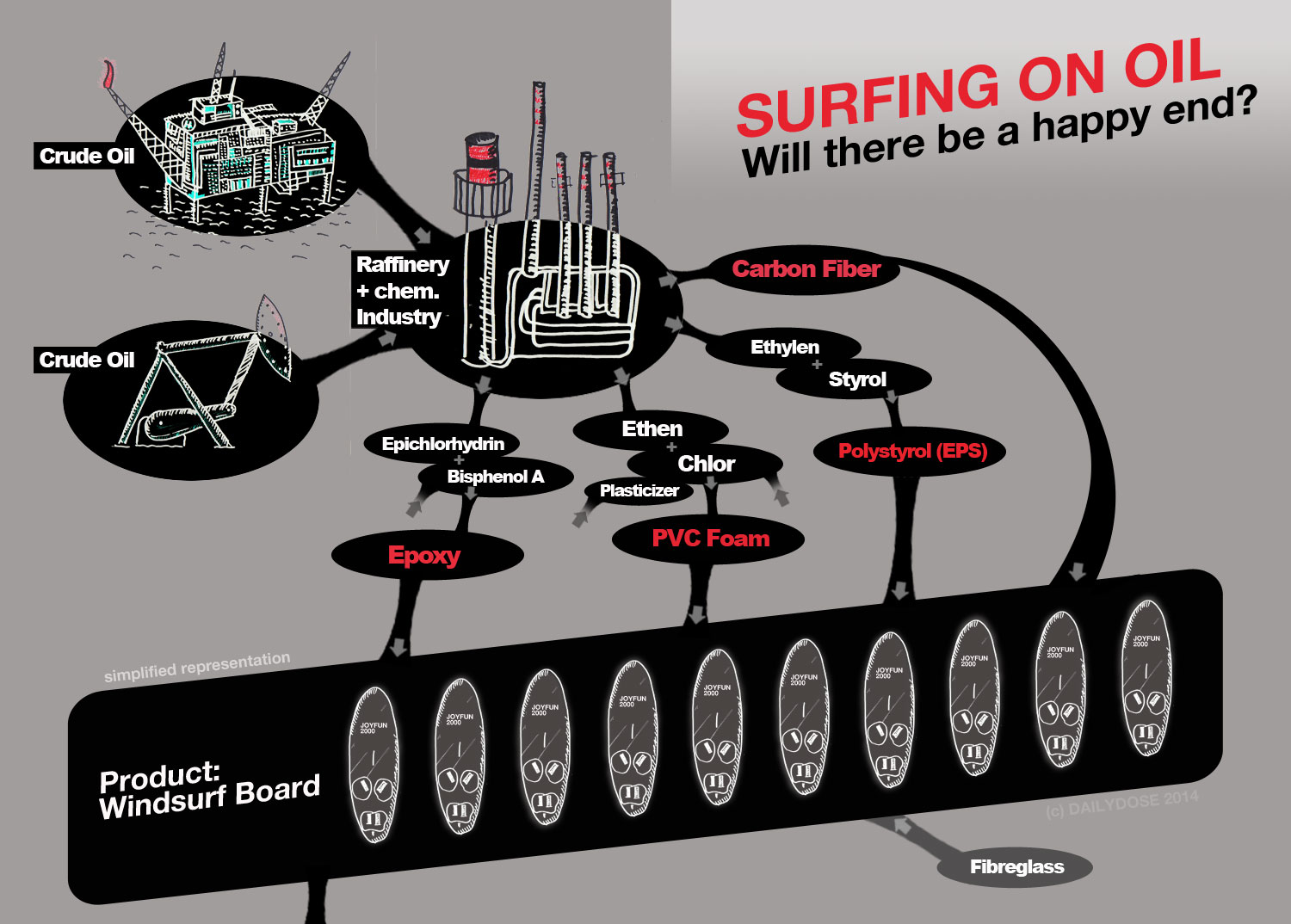5.) The survey among the manufacturers
With such exciting developments in the background, in early September we began with questioning the manufacturers of windsurfing boards.
We wanted to know which materials are used in production and in addition, we asked about the disposal of production residues and posed the question: "Are you following any concrete plans to make production more environmentally friendly? And if so, which? "
The answers differed greatly. A very large manufacturer informed us by e-mail that they do not wish to give any information. Others simply remained silent. And again others continually delayed replying. They will certainly have their good reasons for this. So let us give precedence to those who actually responded.
6.) Only what is ordered is produced
The heading sounds simple, but it packs a punch. Many brands produce at Cobra in Thailand and Cobra manufactures the boards according to the specifications of the brands.
And to date, the production has been dictated by market-specific parameters such as price and durability.
Svein Rasmussen from Starboard put it in a nutshell quite responsibly as follows: "The customers create demand with OEM manufacturers , so the responsibility lies with the brands and how they design the products to be built."
This also means: Only those who demand eco-friendly, planet-protective board construction will get it. In the end, this is also the responsibility of the final customer, who should demand this of the brands if they really want it.
|
 |
Initial signs of improvement, albeit only to a small extent, can be observed. Wood or corkare being processed, and PVC is then sometimes omitted.
The issue is definitely not simple. Slightly rising production costs become evident in the sharp increase in retail prices, Craig Gertenbach from Fanatic remarks. (But do the prices really have to increase? Especially in the bio composite area, the cheap raw materials can sometimes originate from waste products from the agricultural industry.)
For an industry that is not exactly flourishing anyway, falling sales figures can be quite dangerous. If a manufacturer invests in environmentally friendly production and the customers do not buy this product, then he is the looser.
Such a dampener for innovation in respect to a sustainable, environmentally friendly production could be avoided more easily if the manufacturers would co-operate. In windsurfing this possibility is logical as almost all brands have their boards produced by only one company...
Also, the durability is an important point. Craig Gertenbach, Svein Rasmussen and Patrik Diethelm think that the currently high quality and very durable boards are a plus because fewer boards are being produced and transported around the earth. But the production chain will still not become more sustainable and safer for our planet because of this.
Other, not so large manufacturers such as Günther Lorch, try to produce as environmentally friendly as possible but on a smaller scale. Extraction systems or kilns are optimized or the lighting in the production hall is exchanged.
Nevertheless, these approaches do not suffice. Svein Rasmussen says: "I am very concerned about where our consumer society will lead us and our brand unfortunately plays along with the game in many respects." ***
|

